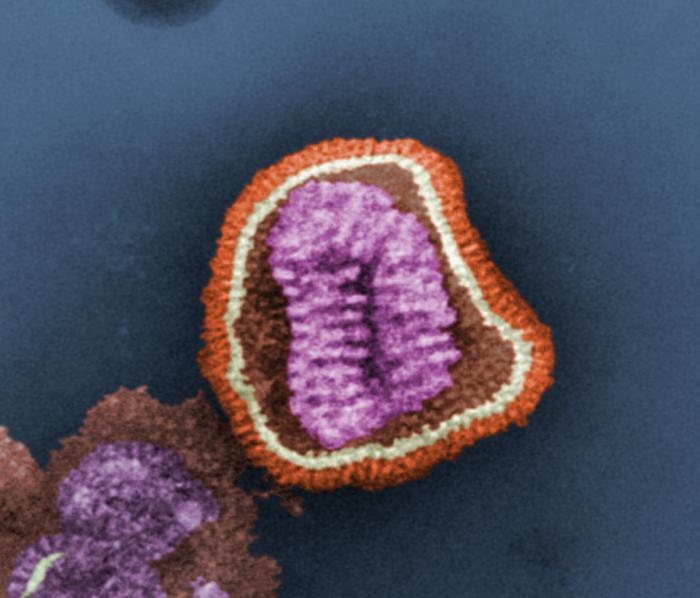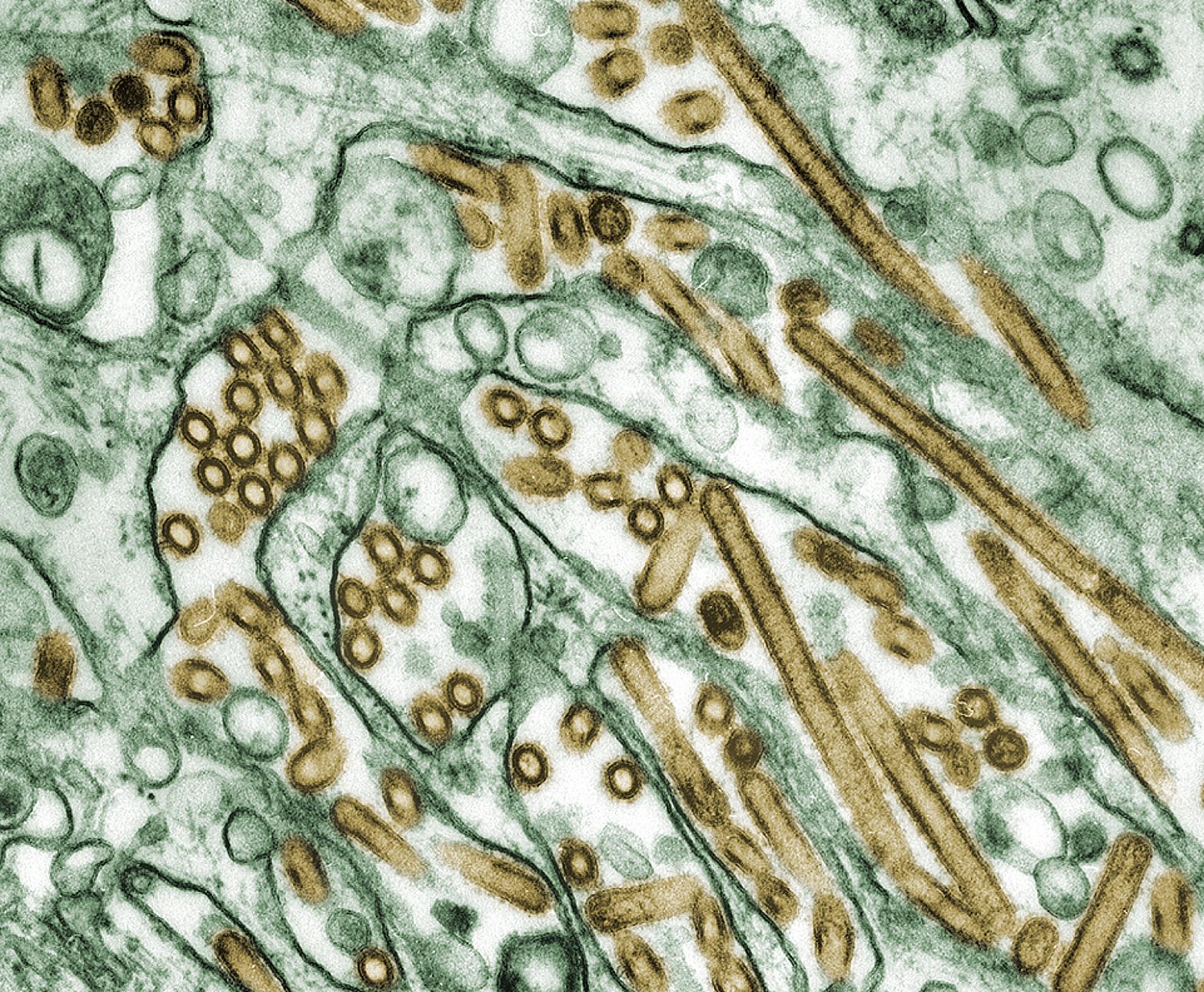Enhanced infectivity of H5N1 highly pathogenic avian influenza (HPAI) virus in pig ex vivo respiratory tract organ cultures following adaptation by in vitro passage
Pigs are thought to play a role in the adaptation of avian influenza (AI) viruses to mammalian hosts. To better understand this mechanism and to identify key mutations two highly pathogenic AI (HPAI) viruses (H5N1 and H7N7) were grown in pig cells, To mimic the pressure of an immune response, these viruses were grown in the presence of antiserum to the homologous virus or porcine IFN-gamma. Mutations were identified in both viruses grown in vitro in the presence and absence of antisera or IFN-gamma and included the PB2 mutations, E627K or 627E,D701N, described previously as requirements for the adaptation of AI viruses to mammalian species. Additional mutations were also identified in PB1, HA, NP and M genes for viruses passaged in the presence of immune pressure. The infectivity of these viruses was then assessed using ex vivo pig bronchi and lung organ cultures. For lung explants, higher levels of virus were detected in organ cultures infected with H5N1 HPAI viruses passaged in pig cell lines regardless of the presence or absence of homologous antisera or IFN-gamma when compared with the wild-type parental viruses. No infection was observed for any of the H7N7 HPAI viruses. These results suggest that the mutations identified in H5N1 HPAI viruses may provide a replication or infection advantage in pigs in vivo and that pigs may continue to play an important role in the ecology of influenza A viruses including those of avian origin.
Back to publications

